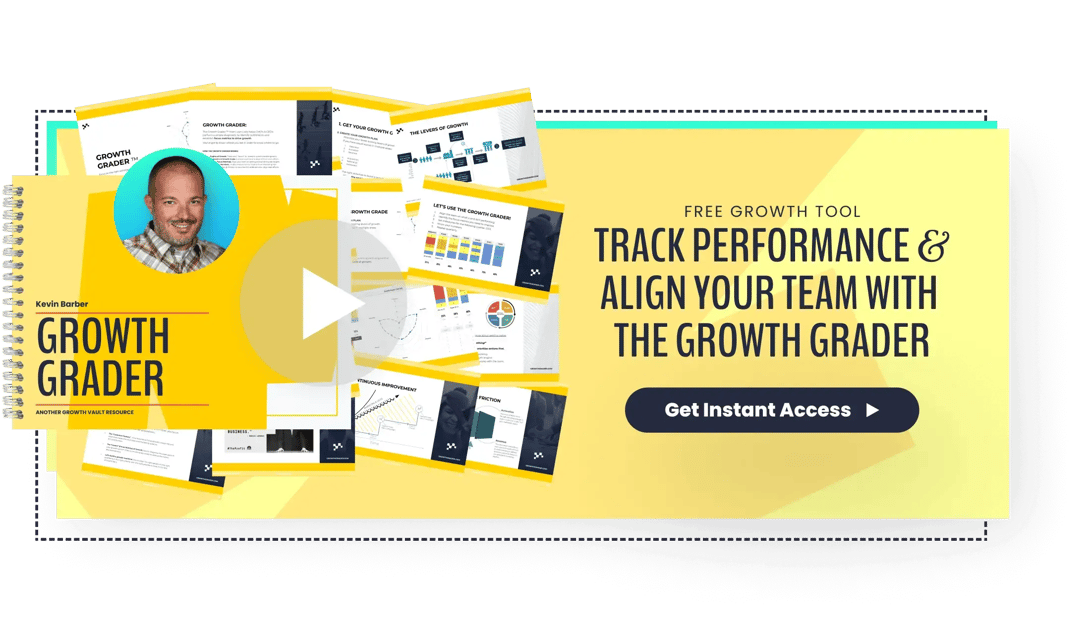Growing your business sometimes feels like an uphill battle.
To stay ahead of the competition, it’s vital to continuously invest in marketing initiatives that will generate a high, long-term return on investment (ROI). Sometimes, you implement a marketing strategy and get a win. Other times, you plow money into a plan that bears no fruit.
Many early-stage startups use growth hacking for massive growth on small budgets. But growth hacking as a philosophy is often misunderstood. Instead of finding tips and tricks to ‘cheat’ growth, you should consider where growth hacking fits into your overall strategy.
This blog post will explore some of the most effective B2B marketing growth hacks that you can use to maximize ROI.
Maximize ROI: 7 Surprising B2B Marketing Growth Hacks
Startups often want to grow ridiculously fast but often don’t have big budgets and are light on resources. Enter growth hacking.
Growth hacking focuses on finding out-of-the-box, low-cost ideas that create massive growth. Sean Ellis first coined the term when trying to come up with a job description. He helped lots of startups accelerate growth as a consultant.
Instead of focusing on budgets, expenses, and conversions, he put all his energy into the ‘true north’ metric: Growth.
For B2B and SaaS companies, growth hacking is an attractive strategy. It’s easier to use analytical, inexpensive, creative, and innovative methods to acquire and retain customers than to sink large amounts of money into traditional marketing methods.
Common growth marketing strategies include:
- Content marketing - Creating shareable content, engaging with your audience through various channels, guest-posting on other blogs, and reaching out to influencers.
- Paid advertising - You might sponsor content and use pay-per-click advertising to invest in paid social media campaigns.
- Product marketing - You could gamify the onboarding process, run contests, and giveaways, or use affiliate marketing.
That’s not to say growth hacking is the best strategy for B2B. It does come with risks if it’s not used correctly.
It’s not about quick fixes and shortcuts but developing a robust strategy. If you focus solely on tactics, you won’t see the forest for the trees or how growth hacking fits into the larger play, sustainable growth.
Common strategies aside, let’s look at some slightly left-field tactics to maximize ROI.
VIDEO TRAINING
Get The Growth Marketing Playbook.
Learn to plan, budget, and accelerate growth with our exclusive video series. You’ll discover:
- The 5 phases of profitable growth
- 12 core assets all high-growth companies have
- Difference between mediocre marketing and meteoric campaigns
Thanks for submitting the form!
We'll review the information you've submitted and respond to you just as soon as possible.
1. Referral Incentives
You shouldn't give your product away for free, right? Wrong: You can and should. You want customers to use your product, love it, and share it with their friends and peers.
As well as having a free version of your product, you can make use of referral incentives. Dropbox and its viral referral campaign are often cited as the most successful referral campaign ever. Here’s why.
They were spending hundreds of dollars on AdWords for a meager return that would have quickly put them out of business. So they changed course. They designed an easy-to-use referral program that gave each customer 500MB of storage space when they signed up. Think of how likely you are to sign up for something if a friend tells you to.
They designed an easy-to-use referral program that gave each customer 500MB of storage space when they signed up. Think of how likely you are to sign up for something if a friend tells you to.
In April 2010 alone, Dropbox users sent 2.8 million direct referral invites, allowing Dropbox to go from 100,000 to 4,000,000 users in 15 months.
To use the referral program, think about including a referral incentive into your onboarding process, frame it as a benefit for the user (Dropbox’s CTA is ‘Get more free space’ instead of ‘Invite friends’), and make it easy to implement.
2. Application Programming Interface (API) and App Integrations
Suppose your product or service has a clear benefit and provides a solution for other B2B businesses. In that case, you have to reach out to those businesses and start a mutually beneficial relationship. A simple example of an API is when you sign up to a mailing list or website, and you have the option to ‘Sign up with Google.’ An API makes this possible.
Businesses are always looking for ways to streamline operations. If your software makes their lives easier, they’ll want to work with you. You want to integrate your app with other valuable apps to leverage both apps' data, brand awareness, and user base. Integration is another way to reach your target audience.
For example, you can integrate HubSpot with 100+ apps and web services such as Wistia, Gmail, and WordPress to help manage marketing campaigns, websites, and sales efforts.
3. Live Streams
With video marketing playing such a massive role in marketing strategies, live streaming takes your video content one step further. Imagine hosting an event for your product launch and inviting a few hundred people. In the B2B world, you’re not maximizing reach with in-person events.
But a live stream with a live demo of your product? Now you’re talking! You can instantly create a wider audience for your event. Post-event, sharing your live stream across platforms might create a snowball effect. You will, of course, need to promote your event and drum up some excitement, but with the right outreach to your ideal audience, people will be excited to join.
Other ways to take advantage of live streams include:
- Showcasing new products to your current customers to give them an exclusive look, and then telling them to shout about your product to their friends and peers before hosting another live event!
- Go behind the scenes to build your brand and show your human side.
- Connect and engage with your audience in real-time.
- Host Q&As so your audience gets the answers to their concerns and challenges using your product.
- Partner with other leaders in your market to provide knowledge and entertainment.
It doesn’t cost much to live stream. You don’t need costly video production and hours of editing. Just set up and go.
4. Proactively Collect Reviews
Why do 93% of visitors to SaaS websites not convert to customers? You’re asking the wrong question, even though that’s a crazy statistic, right? What you should be asking is how can we buck the trend and increase our conversion rate?
One sure-fire way is customer reviews.
We could go on, but you get the gist.
Are you going out and asking for reviews? It should be a priority in your marketing strategy. Don’t get caught up in trying to find new customers before delighting your current customers and turning them into brand advocates.
Make it easy for customers to leave reviews. Have a reviews page on your website, embed a pop-up review form, offer incentives, email your customers, and ask for reviews. Use social media, chatbots, and thank you pages. There are so many ways. Get creative!
5. Free Trials are a Must
Try before you buy isn’t a new concept. But in the B2B and SaaS worlds, it’s crucial. Remember, your products aren’t tangible. Offering a free trial is a great way to let your customers ‘see’ them. But too often, the barrier to entry is too high.
Make it easy for customers to sign up for a free trial or demo. A clear CTA, designed and placed well, is crucial.
A popular concept is to let users try a freemium version of your software and hold certain elements back. If your customer’s business is small, they may choose to stick with the free version. However, as their business grows, they may decide to invest in the paid version of your product.
To take advantage of free trials, collect email addresses and engage with customers. Use content such as walkthrough videos, helpful articles, and check-ins to delight them in the onboarding process.
Consider setup, configuration, and usability. If customers have questions, go above and beyond to answer them and ensure they’re satisfied. Open clear lines of communication to help your customers sign up at the end of their trial.
Lastly, a word of caution: It’s more difficult to get people to sign up for opt-out free trials, where a prospect needs to enter credit card details and actively opt out before it turns into a subscription. Additionally, if customers do get charged a subscription fee because they forget to opt out before the free trial ends, they will be frustrated with their experience.
6. Repurpose Blog Content
This might seem obvious, but you have a goldmine of potential content to share across multiple platforms if you have a blog.
Turn blog posts into videos, social media posts, and TikTok videos. The possibilities are endless. In turn, this content is shareable. By including ‘Tweet this’ buttons or ‘Share to your stories’ in the content, your audience can quickly share it with their friends and peers.
This growth hack has the potential to boost SEO and get your content into the hands of more people. You'll receive quality backlinks if readers share your repurposed content outside of your site. And sharing quality content on a variety of platforms on a single topic raises your profile and helps position you as an authority.
An example: Here’s how Copyblogger took a blog post, ‘The 3-step Journey of a Remarkable Piece of Content,’ and transformed it into a SlideShare–it has 38k+ views to date.
7. Research Keywords Incognito
SEO growth hacking helps businesses boost rankings in search engines and helps get your content on the first page of Google. There are a few ways to boost SEO, and ranking for specific keywords is one of them.
When you search for keywords regularly and enter websites, your browser records those websites, and Google searches will show those websites you visit most often. This ranking isn’t a true reflection of where your website stands.
An incognito window is an excellent way to perform searches and bring up unbiased results not based on your browser history. When determining where your website stands for a specific keyword, search for it on an incognito window to get an accurate result.
Once you know the results, you can develop content ideas and reach your ideal customers.
Always Keep the Six Levers of Growth in Mind
While some of these B2B marketing growth hacks are easier to execute than others, all can be highly effective in increasing your B2B marketing ROI. However, while we've seen growth hacking work, the most outstanding results stem from developing a comprehensive marketing growth strategy unique to each client we work with.
The six levers of growth are Awareness, Acquisition, Activation, Revenue, Retention, and Referral. While growth hacking targets a specific lever, all six levers are in operation at once as part of a robust growth strategy.
A growth strategy focuses on optimizing the entire business and is scalable and sustainable. It’s not random acts of marketing. It also optimizes the performance of marketing dollars for improved ROI. Instead of looking for the next hack, you can identify the unique advantages of your product and build a company prepared to scale.
We’ve helped clients achieve success with $100m revenue growth and helped them raise over $90 million in funding using this approach.
Download our Growth Grader to get started. You can use it to measure and track the six levers of growth within your company and learn what’s working and what isn’t.







